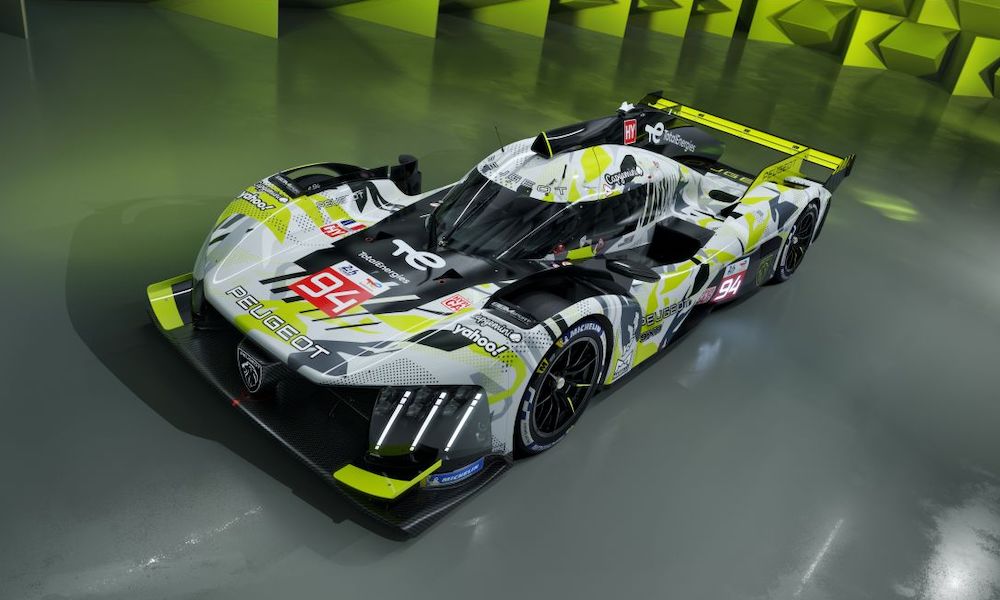
After Alpine, Lamborghini and Isotta Fraschini debuted their brand new WEC Hypercars at the season-opener in Qatar last month, for this weekend’s race in Imola it’s Peugeot’s turn. With the 2024-spec 9X8 now homologated and ready to go following an extensive track test program that began last December, the French team is eager to show off the developments to its package, which it hopes will transform it from an also-ran to a contender.
With the 2024 9X8, Peugeot has moved away from its radical wingless design, which generated the bulk of its downforce via underfloor aero and switched to the now-standard Hypercar tire size, with narrower fronts and wider rears.
Rowing back on its initial concept was a major decision for Peugeot’s effort in the WEC, and left its engineering staff with a colossal task to complete in a matter of months. You could argue that choosing to conduct a ground-up redesign of this car was almost as bold and radical as its plan to compete in the WEC with such an unconventional design in the first place.
After successfully campaigning to use a ‘Joker’ upgrade this substantial following lengthy discussions with the rule-makers, the only carryover elements from the previous iteration are the tub, windscreen, air intake, cooling ducts, engine, gearbox and hybrid system. Practically every surface on the car is new – 90 per cent to be more precise – resulting in a car that, upon closer inspection, looks and feels more like a traditional sports prototype than its predecessor.
Since it first hit the track last December, the new 9X8 has completed a whopping 15,000 kilometres of running at a number of circuits in Europe including Le Castellet, Portimao and Aragon. The focus throughout, Peugeot driver Loic Duval told RACER, was more on durability rather than performance.
The previous-gen 9X8, particularly early on, suffered from a suite of reliability woes. Over a series of small developments the major concerns, such as the issues stemming from the car’s gearbox, were solved. But it was never perfect. This left the team with a car that proved to be very track-sensitive and tricky to balance against the more conventional cars in the class via BoP.
More often than not the original 9X8 flattered to deceive. It failed to win a single race and only briefly showed flashes of front-running pace, notably at Le Mans in changeable conditions, at Monza a month later and in its final outing at Qatar back in March before the lead car ran out of fuel while battling for the lead.
So, with the testing and development phase in the books and the car mere days away from its first race, the questions now are: Will this change in approach work and how quickly can the team get up to speed if this car proves to be a significant improvement?
On the reliability side of things, Peugeot Sport technical director Olivier Jansonnie wouldn’t go into detail but confirmed that testing had not been trouble-free. “But it never is,” he chuckled. “It’s a tough preparation that we are doing, endurance testing for about two days, with more track time than you would see at Le Mans, because the average track speed is not the same.
“With that, you will find some issues, some small that you will fix easily, and some that require a bit more work. But generally, we are for sure better prepared than we were this time last year.”
Duval added that he too can’t say at this stage whether the car will prove to be ‘bulletproof’ when it’s taken to the track in anger this Sunday for six hours on the tight, technical Imola circuit.
“We had many issues last year, then it was better in the second half of the season,” he reflected. “But a lot of resources have been put towards changing concepts. And because of that, we can’t put all our resources into fixing reliability problems. I can’t tell you that we won’t have issues, we are not in that position yet.”